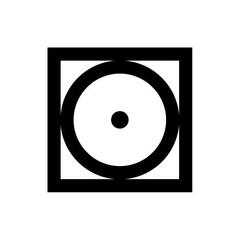Additional features
Hood over helmet designed to offer maximum protection ensuring freedom of movement.
Adjustable to fit 3 sizes in a single movement, using a tightening system located behind the head.
Tightening on the wrist and cuffs to prevent air and snow from getting in.
Snow skirt that also reduces draughts and prevents snow from getting inside.
Ventilation
To stay dry, it is important to wear a waterproof jacket. But you shouldn't end up wet with perspiration.
The vents play an important role in wicking away perspiration.
This is why we have equipped this jacket with two ventilation zips and two large underarm zips (35 cm in size L).
Cut
The wide fit and pre-shaped sleeves are there to free up your movements so you can ski in complete freedom.
We designed this jacket with a component that has mechanical stretch. Move around freely!
Pockets
Two hand pockets with a watertight zip.
One outer chest pocket with waterproof zip.
Ski pass pocket on the arm with under flap zip.
A quick access inside mesh pocket.
What should you wear under your skiing jacket?
To keep warm and dry, use the 3-breathable-layers rule: A ski base later and a second layer liner jacket to retain warmth, a third layer ski jacket to protect you from bad weather.
The base layer keeps you dry by wicking away the perspiration from the skin to the other layers.
The second layer provides warmth, as with down jackets or fleece sweaters.
The third layer
Protection from the outdoor elements (snow, rain and wind) by preventing them from entering (while still allowing perspiration to escape so that you do not feel "wet inside"). It should therefore ideally be waterproof AND breathable. The third layer (or layer 3) can also provide insulation in the case of lined trousers or jackets and complement the second layer.
Water repellency
The water-repellent property of a fabric is its ability to make water run off its surface without absorbing it. This prevents the fabric from becoming waterlogged and remains light, breathable and warm.
A fabric is made water-repellent by applying a treatment to its outer surface.
This treatment needs to be renewed during the lifetime of the garment (we recommend every 3 washes). All Wedze jackets have received a water-repellent treatment.
Component waterproofing
The resistance of a fabric is measured by the height of a water column in mm that can be supported by the fabric (test based on the ISO 811 standard). The higher the pressure, the more waterproof the fabric. A component with a waterproof rating of 15,000 mm is therefore resistant to the pressure exerted by 15,000 mm of water
Breathability of a component
To find out whether a fabric is breathable, we test its evaporative resistance or RET (based on the ISO 11092 standard). The lower the fabric's resistance, the more water vapour generated by physical activity can escape and the higher the fabric's breathability. For example:
RET < 9 = extremely breathable fabric
9 < RET < 12 = very breathable fabric
12 < RET < 20 = breathable fabric
RET > 20 = little or no breathability.
What is a membrane or coated component?
The coating is akin to a paint applied inside the fabric that makes the component waterproof while remaining breathable. The membrane is a kind of very thin plastic film (polyurethane) that requires a lining to protect and make the component waterproof while remaining breathable. It has the advantage of being more flexible, lighter, more durable and often more breathable than a coating.
How do we make a garment waterproof?
The waterproofing of the garment is related to its fabric, seam sealing and assembly design.
We then carry out shower tests on our garments.
Waterproofness/Shower test
This garment has been validated in a shower test under 100 L of water / sqm / hour for 3 hours.
This test reproduces the conditions of a heavy mountain storm.
How do we make a garment breathable?
In addition to the breathability of the fabrics used, we employ technical solutions (zips, vents, mesh) improving the overall ventilation of our jackets and trousers designed for Freeride skiing. These ventilation systems regulate the temperature inside the garment while also helping to eliminate the perspiration generated by the body during physical activity.
Your product is repairable.
This product is repairable. We commit to repairing your product free of charge for the duration of the warranty. Whatever it is, fixings, seams, zips, etc. This service is offered in your usual store.
If, however, we can’t repair your product (non-repairable production defect), you can exchange it or get a refund.
What is the RECCO® system?
All our Freeride jackets and trousers are equipped with the RECCO® system.
With RECCO® technology, you can be located in the event of an avalanche. Someone who is buried in the snow can be quickly and accurately located by the emergency services using the RECCO® tracker and reflectors. RECCO® reflectors are not a substitute for an AVD. The RECCO® technology works as a complementary measure, increasing the chances of being found in time.
Tutorial on how to wash your waterproof garment
We recommend that you follow these guidelines at every wash in order to retain all the technical features of your garment.
Link: https://youtu.be/rh4GLwALgBM
After three washes, restore the water repellent properties with a waterproof spray or wash-in product.
To help you choose the right size
The model is wearing a size L and measures 180 cm.
Measurements:
Waist size: 85 cm
Hip measurement: 100 cm
Chest size: 100 cm




